Subproject A1
Manufacturing Technologies for Piezoelectric Fibers and Laminates for Interation into Lightweight Structures
Project Managers:
Prof. Dr. rer. nat. habil. Alexander MichaelisTechnische Universität Dresden
Fakultät für Maschinenwesen
Institut für Werkstoffwissenschaften
Professur für Anorganisch-Nichtmetallische Werkstoffe
01062 Dresden
Telefax: +49-(0)351 2553 7600
Dr. Sylvia Gebhardt
Fraunhofer-Institut für Keramische Technologien und Systeme IKTS
Abteilung Intelligente Materialien und Systeme
Winterbergstraße 28
01277 Dresden
Telephon: +49-(0)351 2553 7694
Telefax: +49-(0)351 2554 160
E-Mail: sylvia.gebhardt@ikts.fraunhofer.de
Scientific objective target
• Solution of module packaging regarding to geometry, arrangement of piezoceramic component and electrical termination allowing serial manufacturing as well as form-locking and reliable integration into lightweight structures
• Characterization and interpretation of effective material data
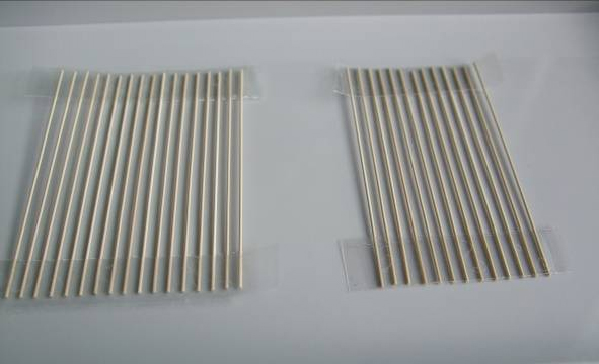 |
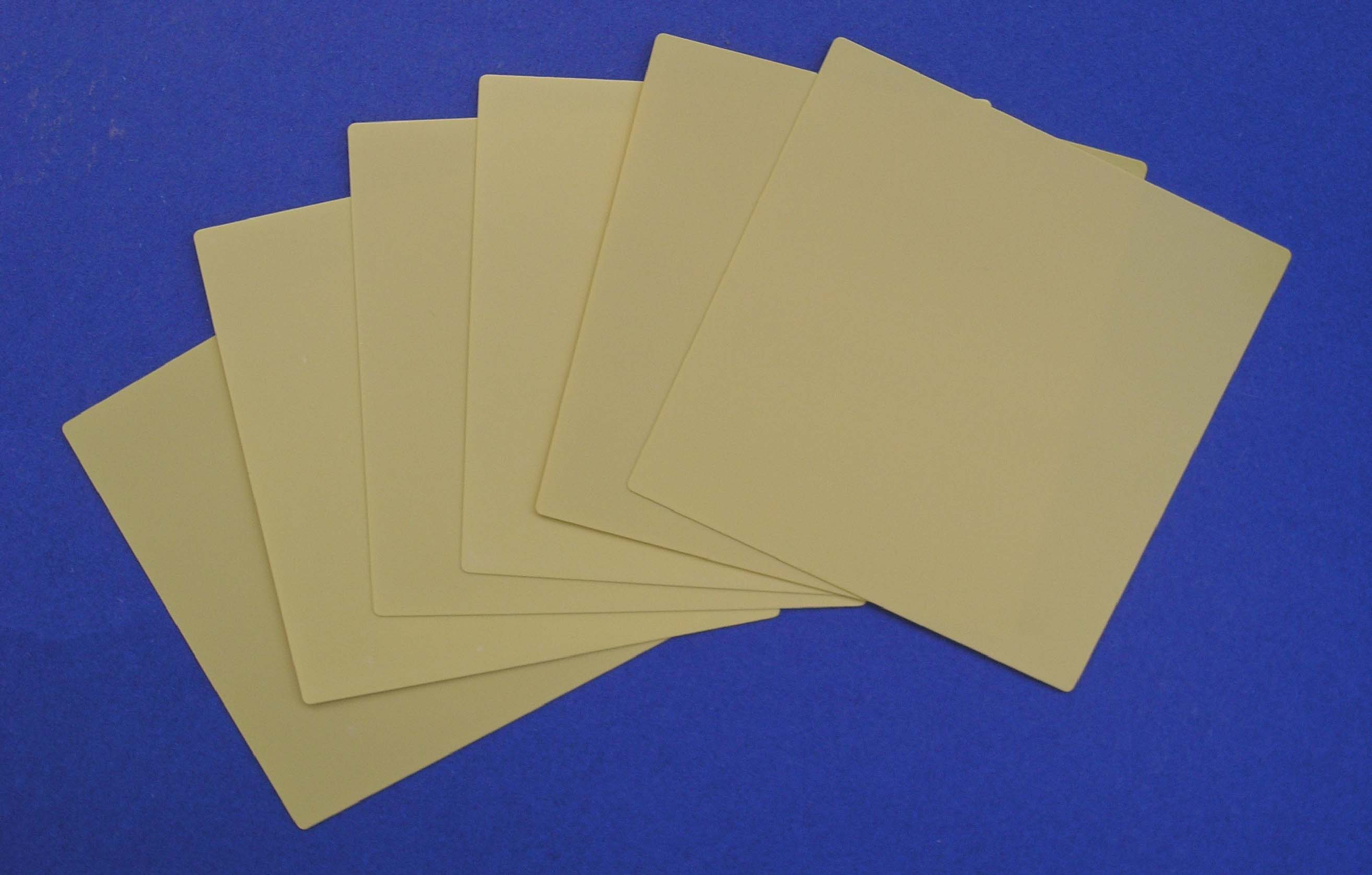 |
 |
Single component |
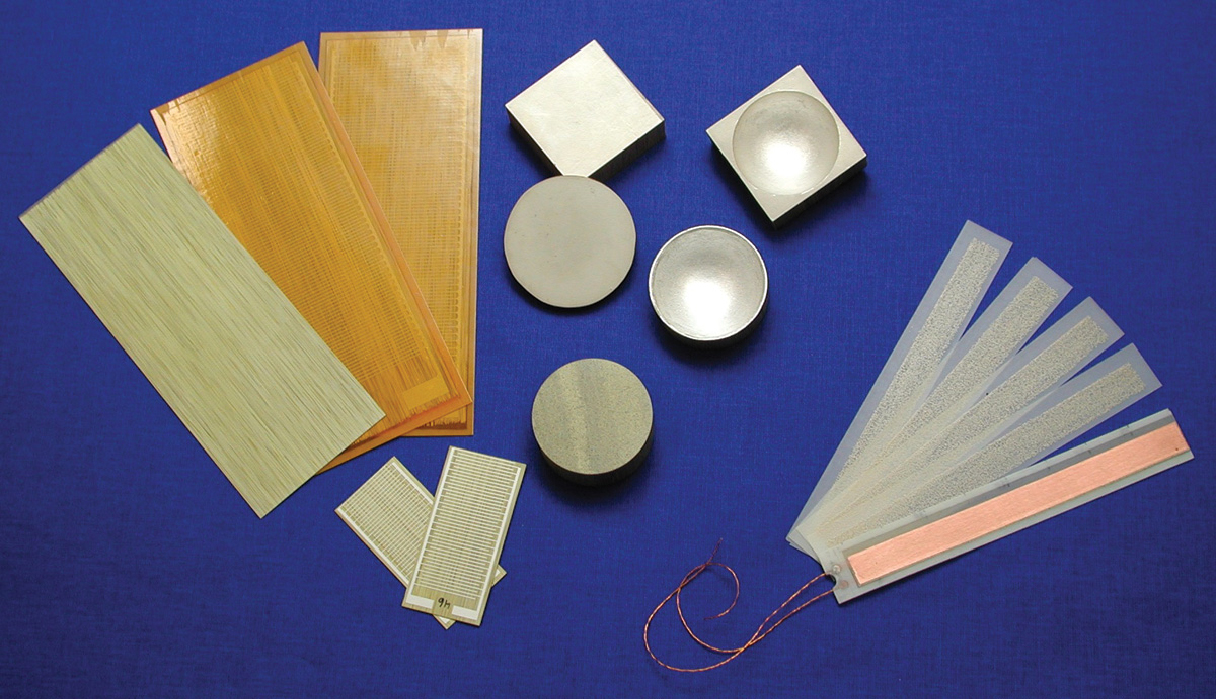 |
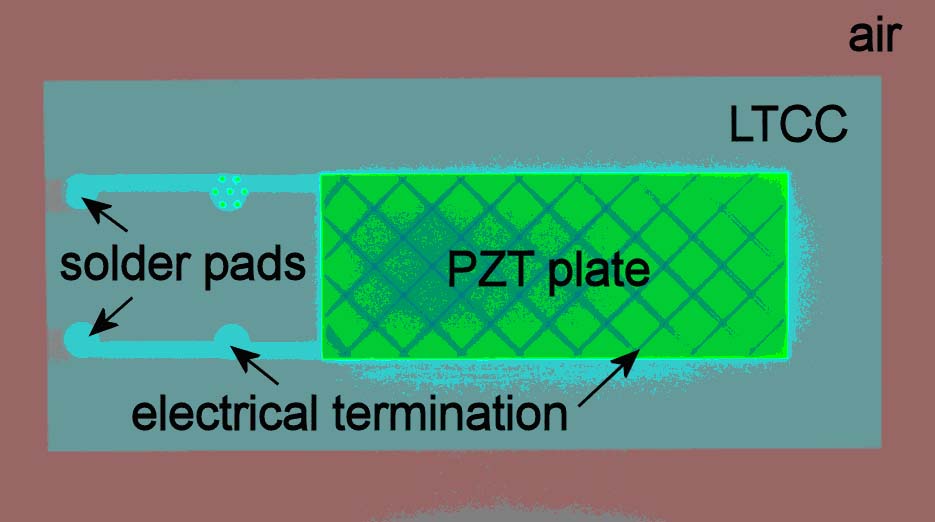  |
Module | |
 |
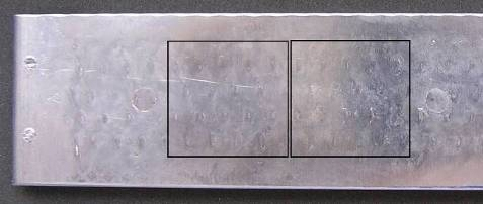 |
Structural component |
Research program
Piezoceramic fibers1. Serial production of piezoceramic fibers
2. Development of methods for single fiber characterization
3. Serial production of piezofiber composites
4. Characterization and optimization of fiber-matrix-interface
5. Adjustment of composite design to process chain demands
6. Adjustment of fiber diameter and arrangement to process chain demands
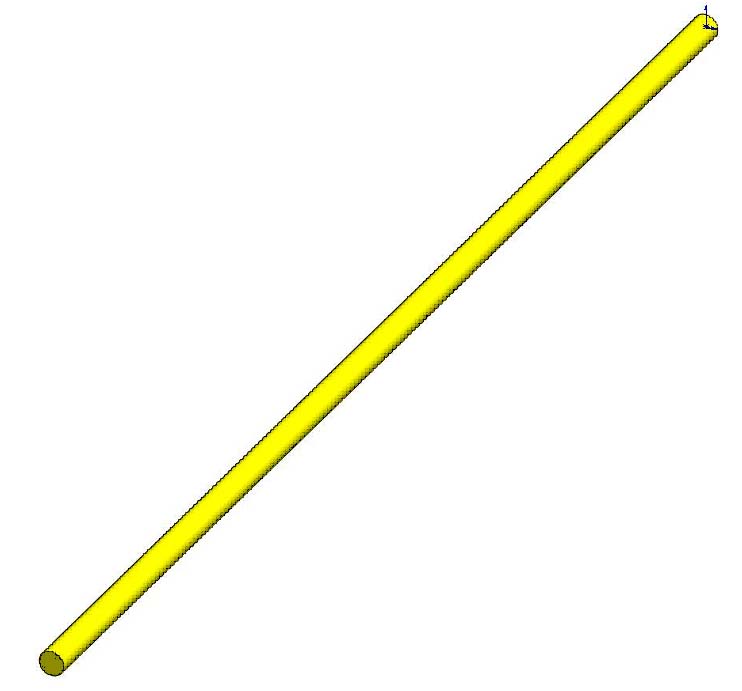 |
Piezoceramic fiber | 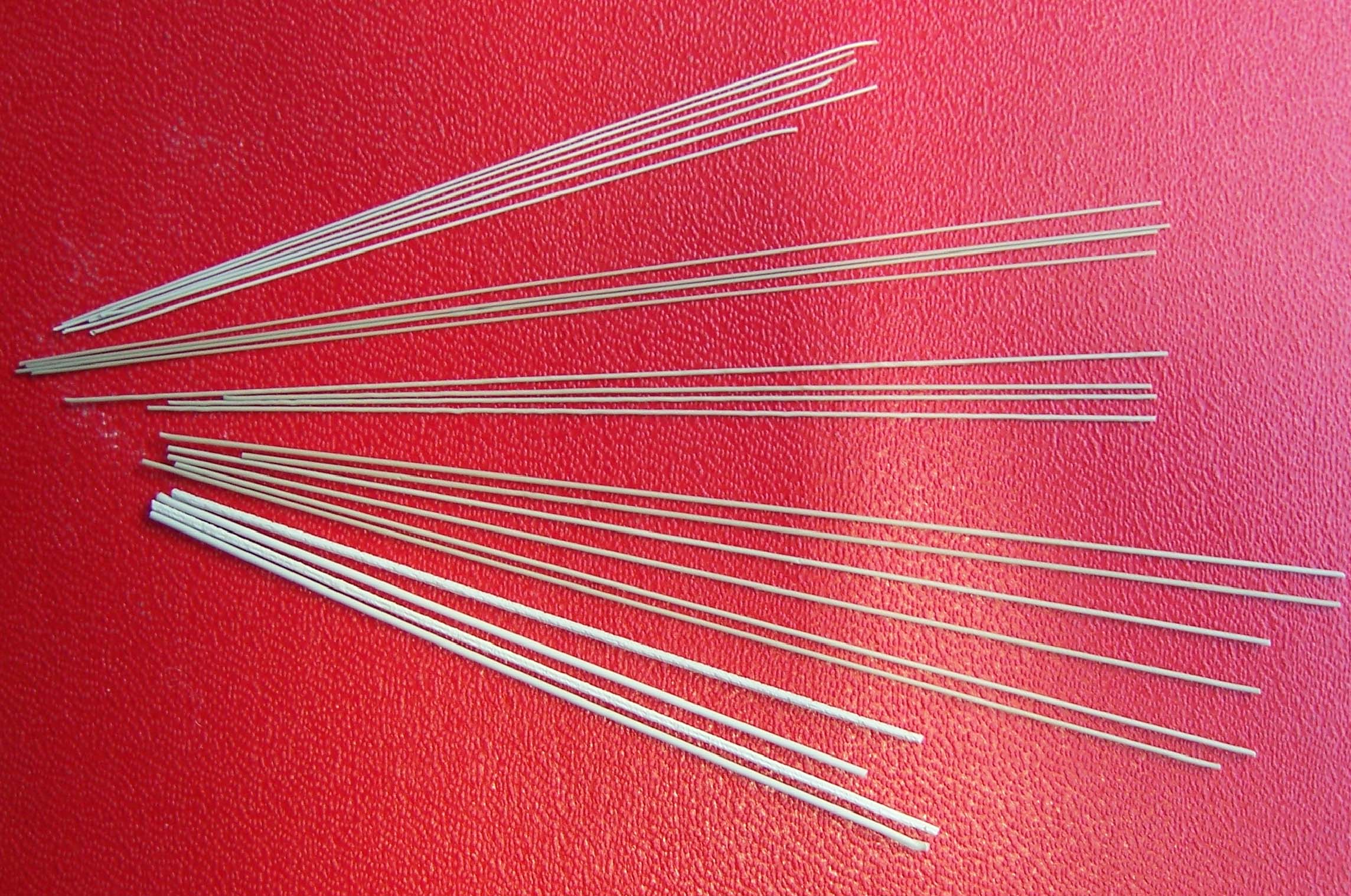 |
WP 1+2 |
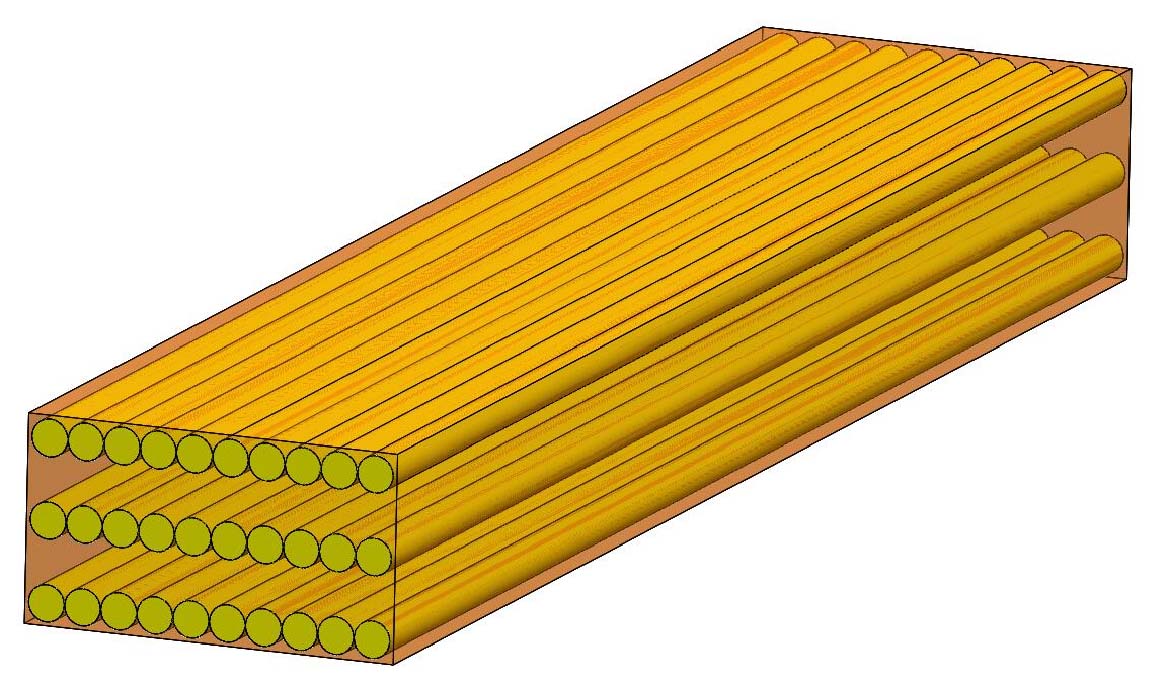 |
Piezofiber composite | 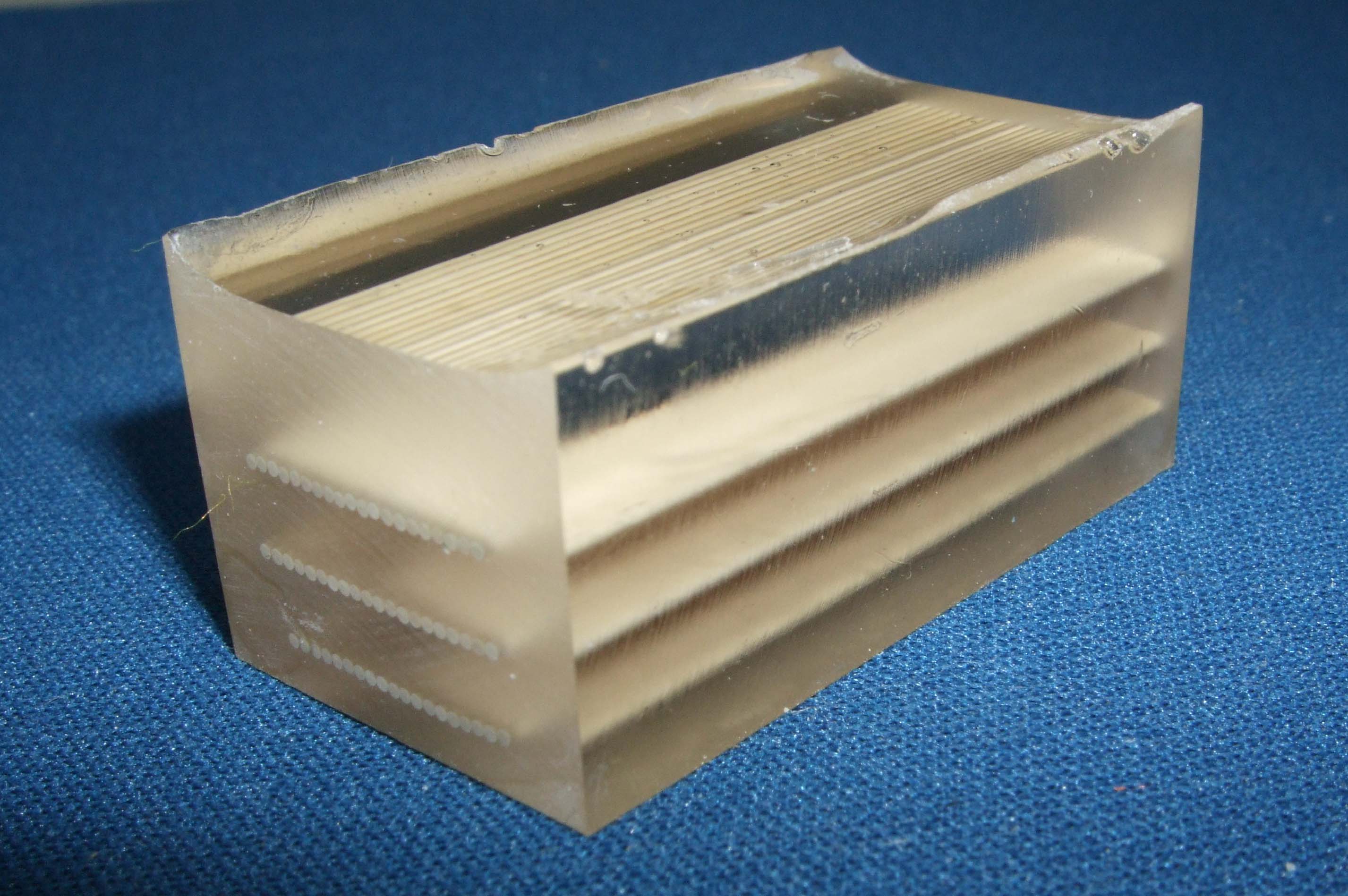 |
WP 3+4 |
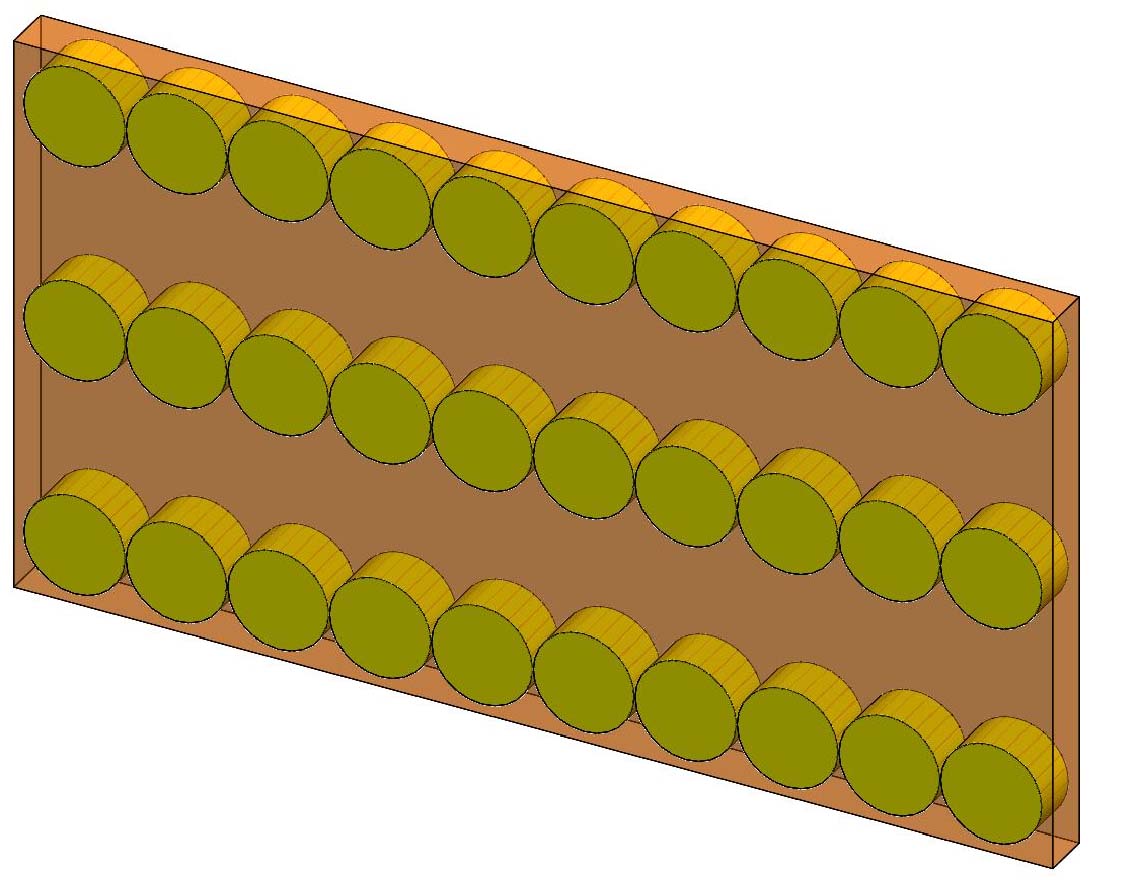 |
Piezofiber composite disc |
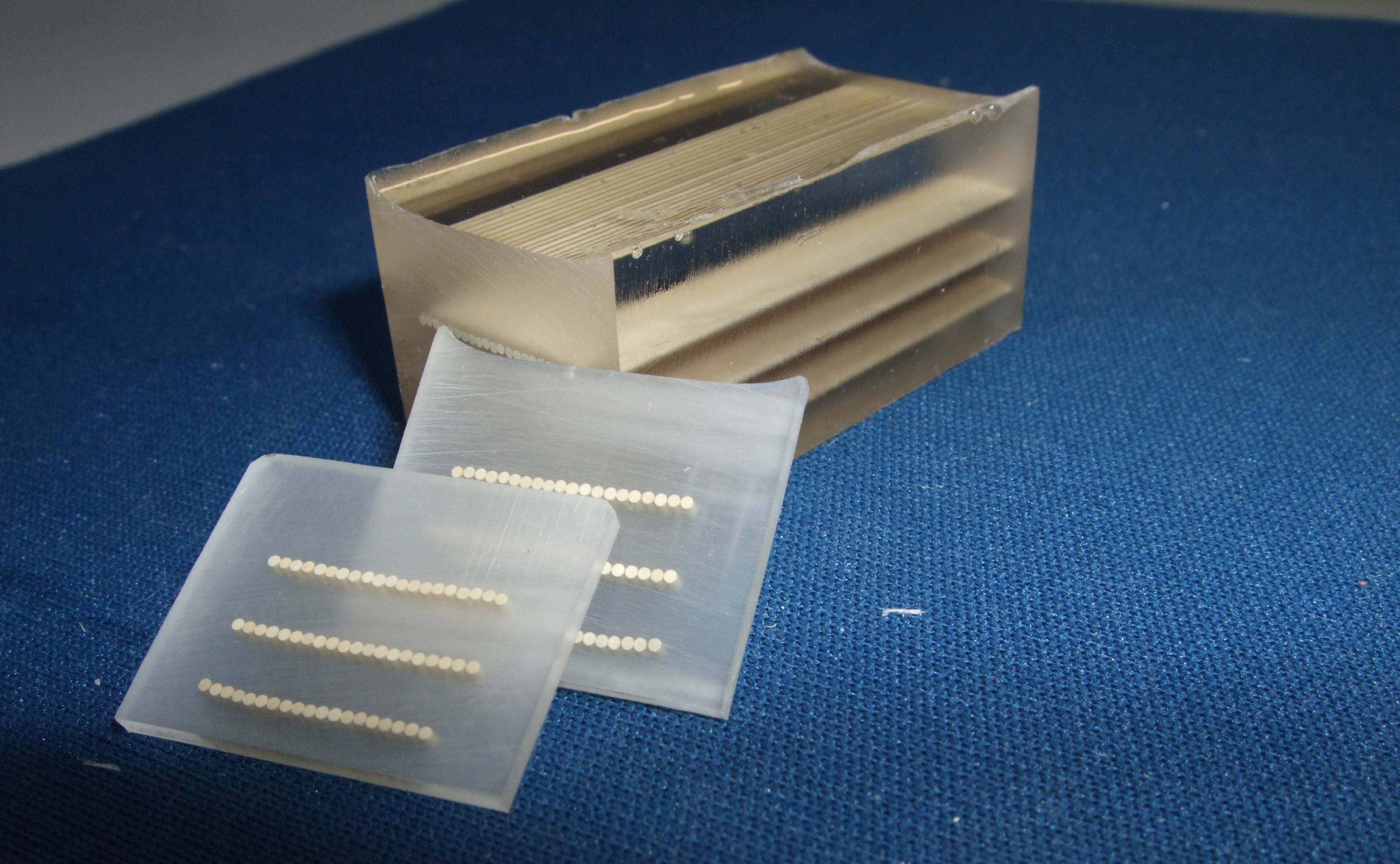 |
WP 5 |
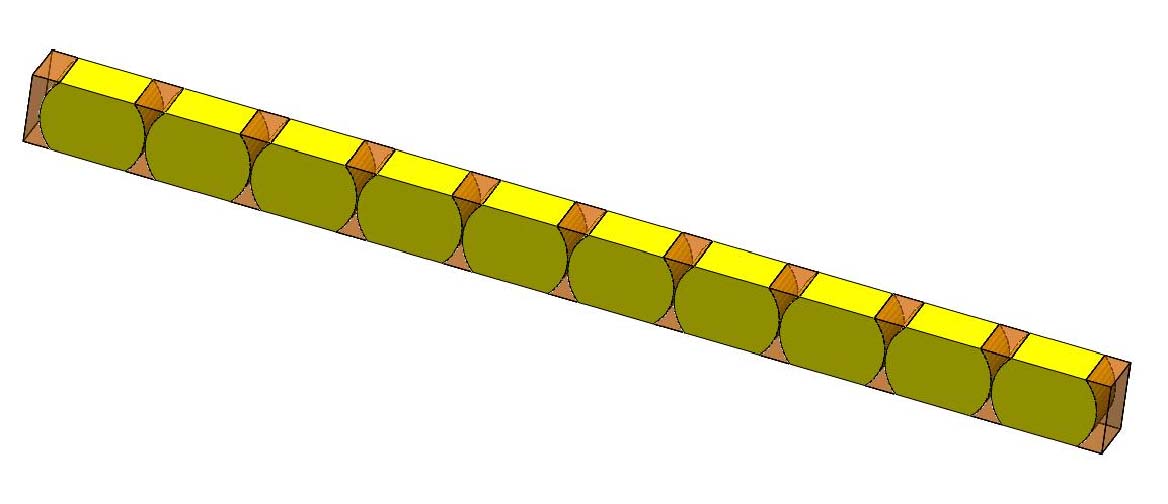 |
Piezofiber composite bar | WP 6 |
Piezoceramic laminates
1. Production and characterization of LTCC/PZT modules
2. Investigation of the influence of mechanical stresses onto electromechanical properties of LTCC/PZT modules
3. Investigation and optimization of LTCC/PZT as well as LTCC/metal interface properties to achieve highest force transfer
4. Integration of additional functional components into LTCC/PZT module for process control
5. Characterization of operating behavior of LTCC/PZT modules
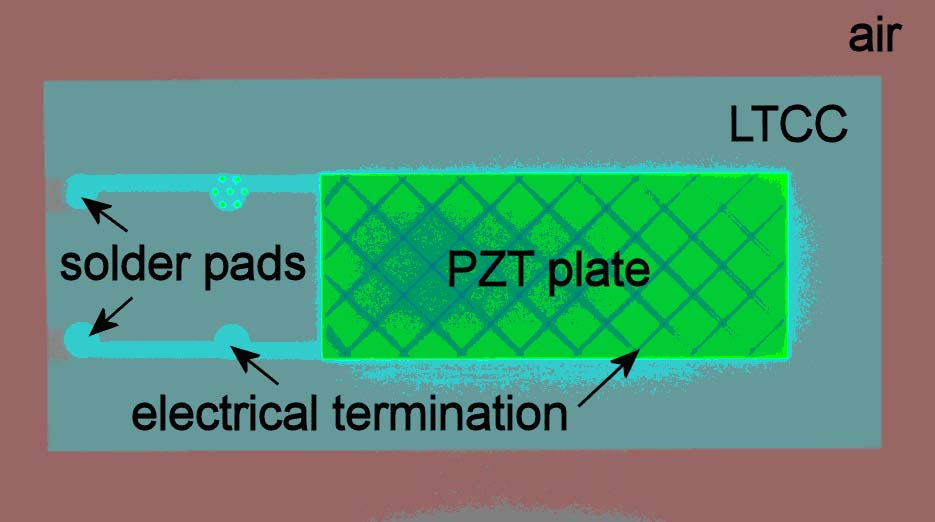 |
LTCC/PZT module | WP 1 |
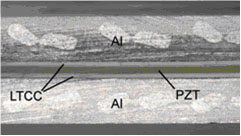 |
Integration/interfaces | WP 2+3 |
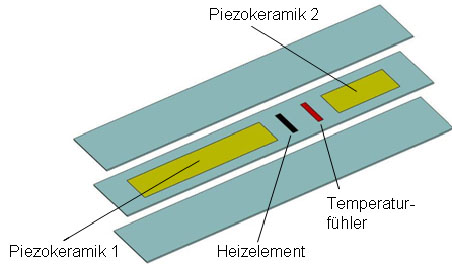 |
Augmented functionality | WP 4 |
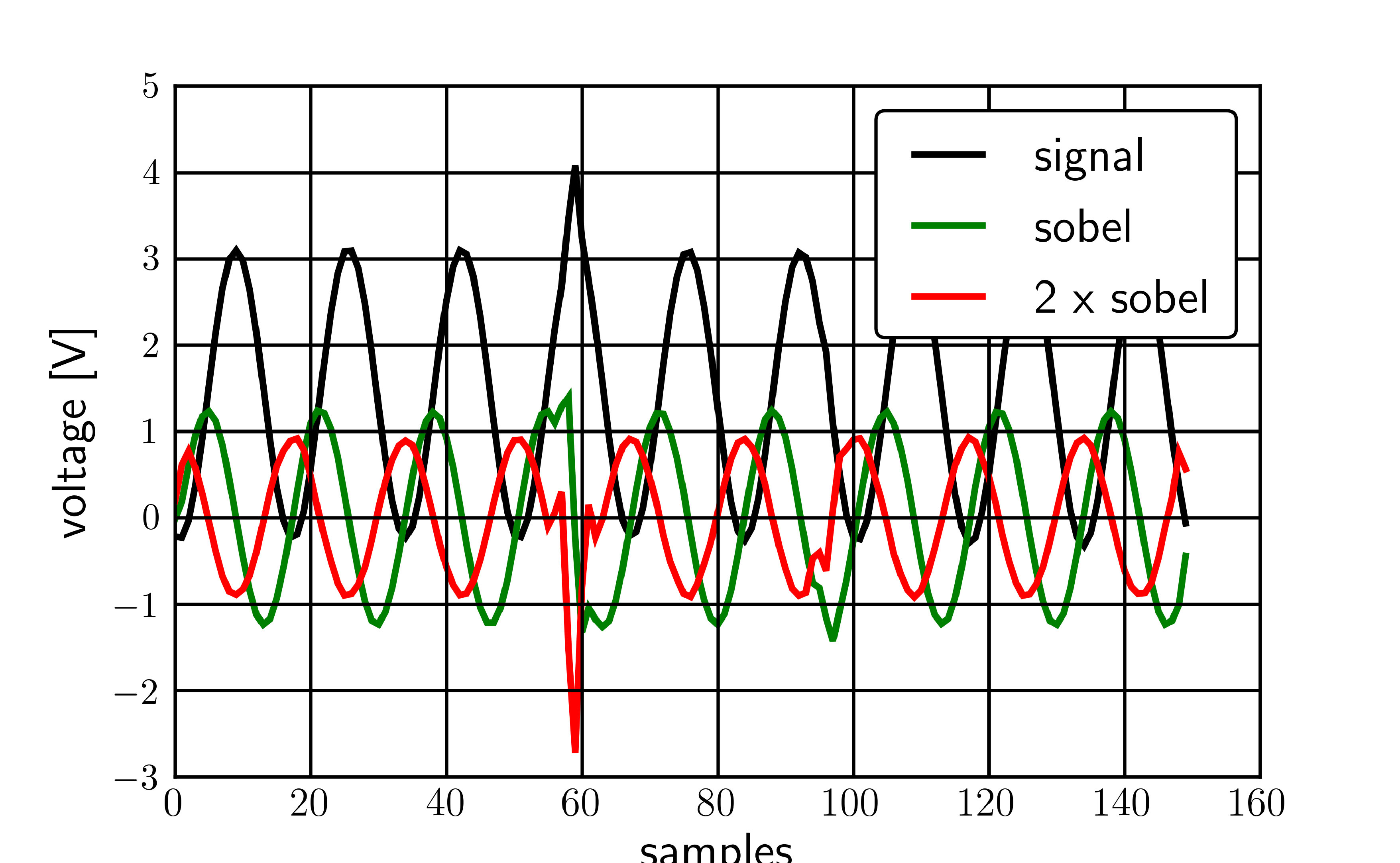 |
Operating behavior | WP 5 |
Methods
Piezoceramic fibers• Fiber development: optimized slurry formulation, determination of spinning parameters
• Characterization: micro-strain-, -bend-, -pressure-methods, grayscale correlation (fig. 1)
• Composite development: defined fiber arrangement, selection of matrix materials
• Fiber/matrix adhesion: single fiber fragmentation test (fig. 2)
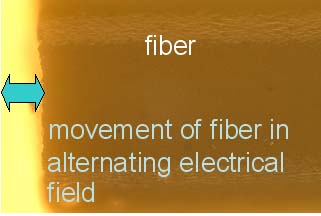 |
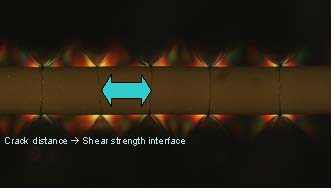 |
| fig. 1 | fig. 2 |
Piezoceramic laminates
• Laminate development: optimization of packaging of integrated circuits for LTCC/PZT modules
• Microstructure analysis: light-, electron beam-, ultrasound-microscopy, X-ray analysis (fig. 3)
• Electromechanical characterization: measurement of electrical impedance, ferroelectric hysteresis, deflection and force (fig. 4)
• Operating behavior: electrical cycling tests
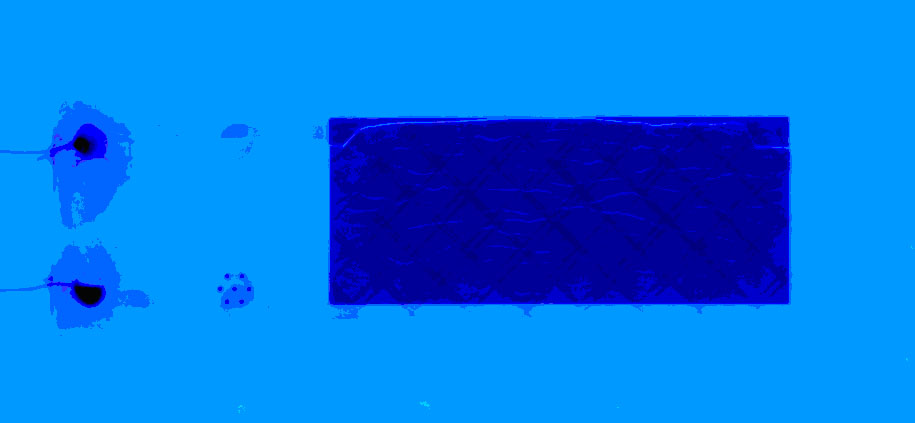 |
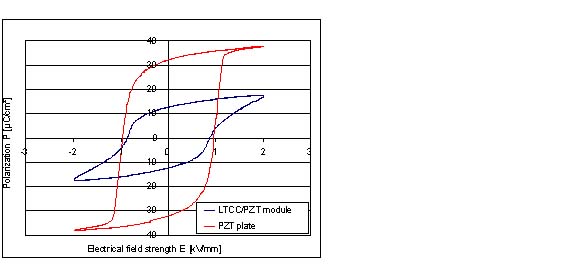 |
| fig. 3 |
fig. 4 |
Results in the 1st application term
Piezoceramic fibers• Successful fabrication of piezoceramic fibers using polysulfone process:
- Free choice of the piezoceramic powder
- Porosity 3%
- Adjustment of fiber diameter: 200-1000 µm (fig. 5)
• Preparation of piezofiber composites with irregular fiber arrangement (fig. 6). Characterization of effective material data.
• Characterization of mechanical and electromechanical properties of piezoceramic fibers and comparison with state-of-the-art (fig. 7).
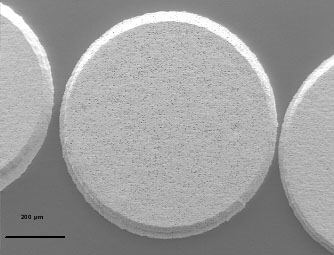 |
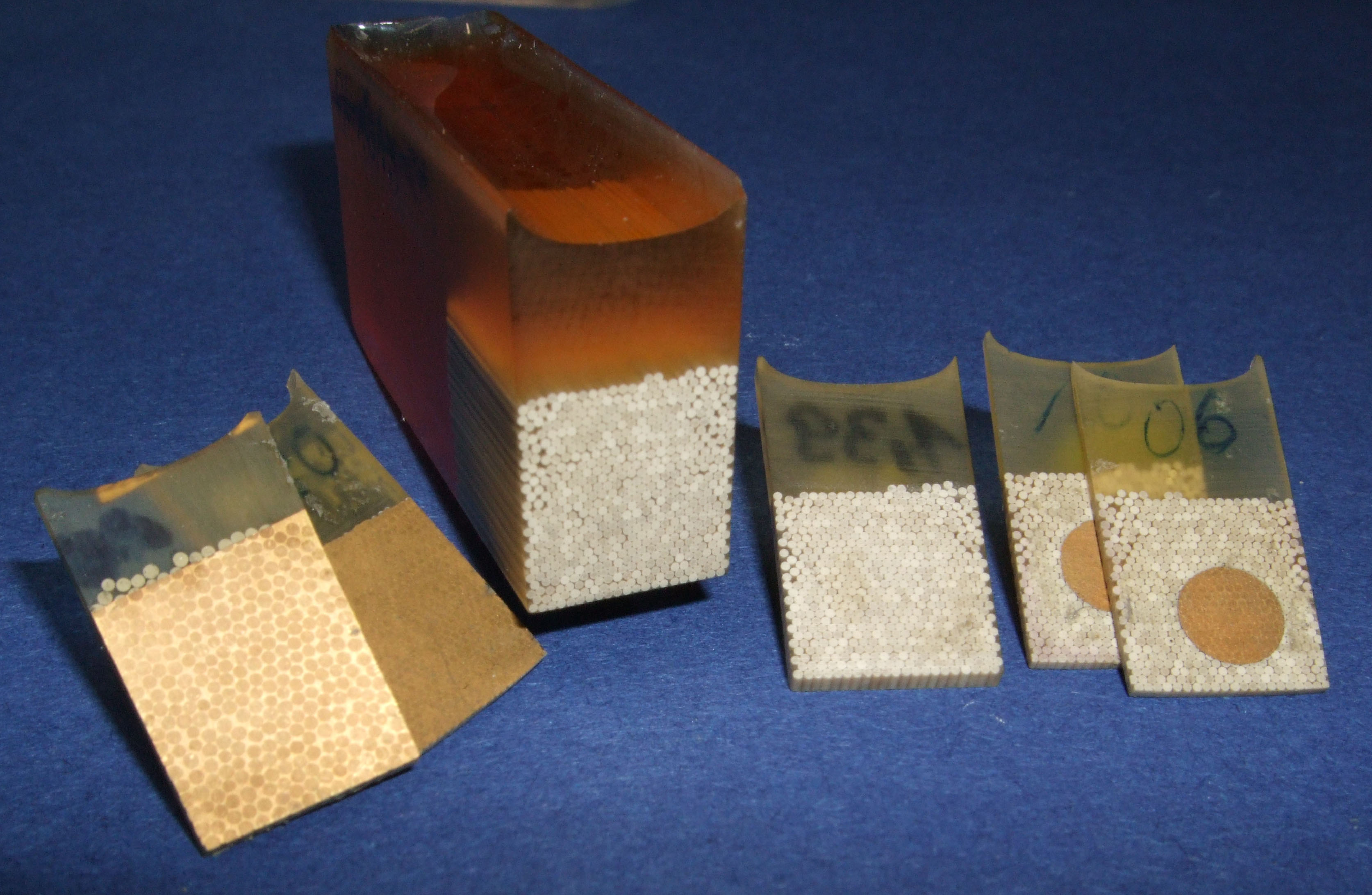 |
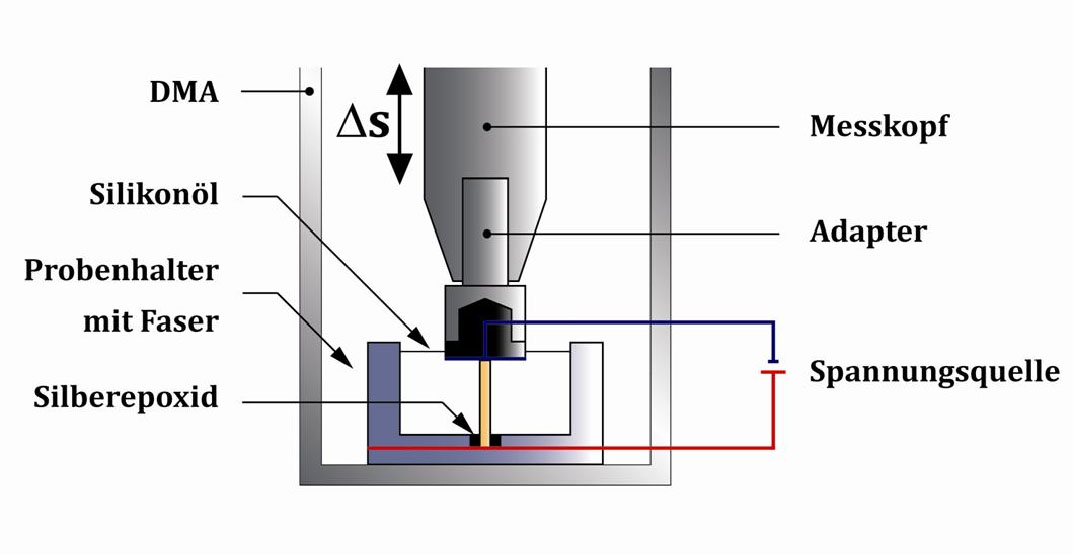 |
| fig. 5 | fig. 6 | fig. 7 |
Piezoceramic laminates
• Design and development of novel LTCC/PZT modules fully based on inorganic materials using ceramic multilayer technology (fig. 8). The following benefits could be achieved therewith:
- Mechanical stabilization and electrical termination of the piezoceramic component
- Electrical insulation to aluminum metal matrix prepared by die-casting
- Reliable interface to aluminum matrix.
• Demonstration of actuator performance using deflection measurements (fig. 9).
• Successful integration of LTCC/PZT modules into aluminum plates by die-casting. Solution of outer electrical termination by means of laser soldering has to be solved (fig. 10).
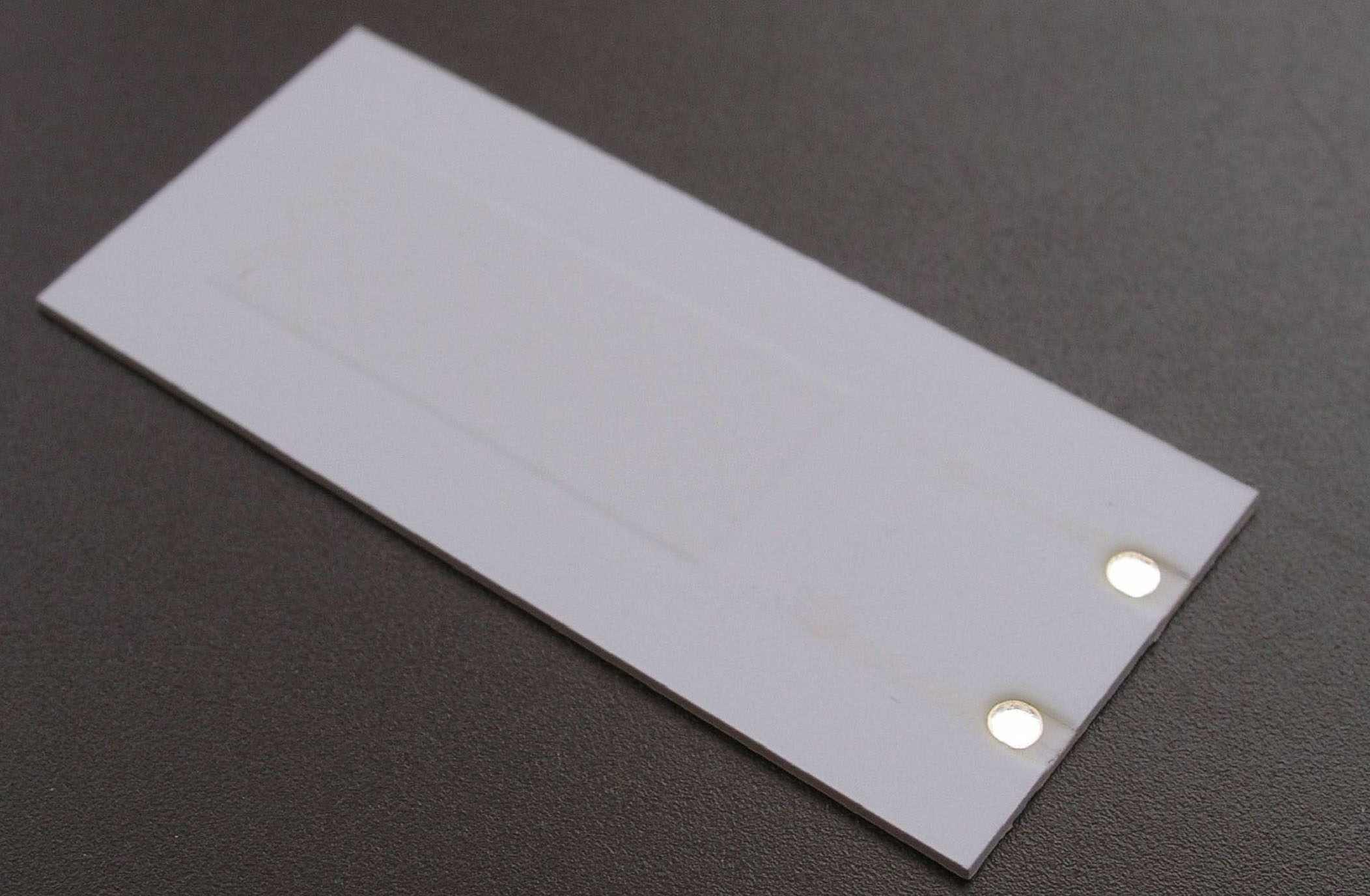 |
 |
 |
| fig. 8 | fig. 9 | fig. 10 |




